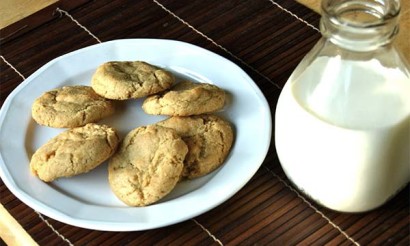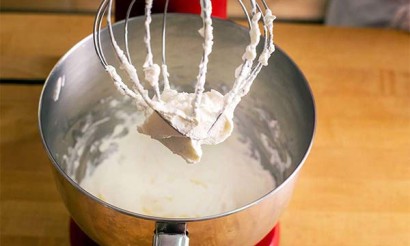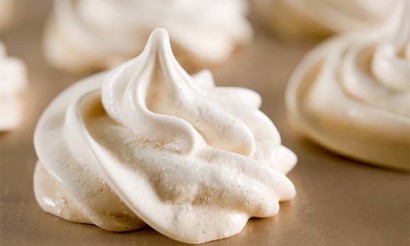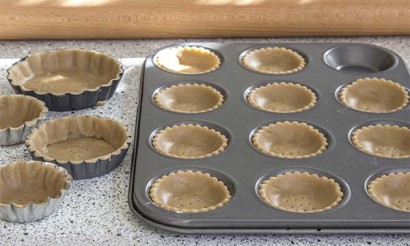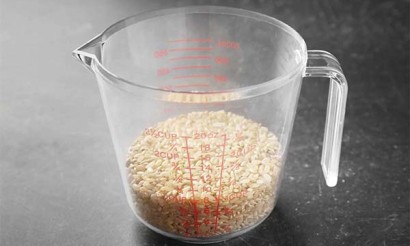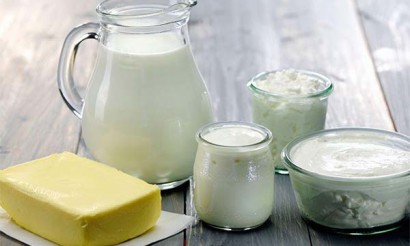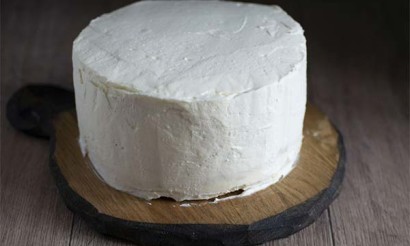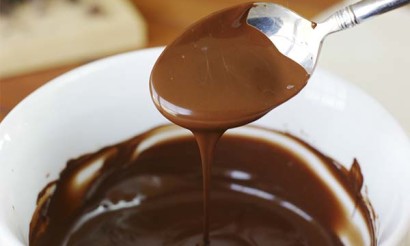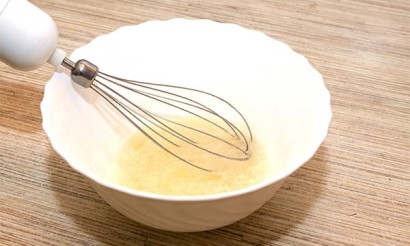How to check the cottage cheese for natural
Dairy products became popular many years ago and have become an integral part of most consumers' diets. In this gastronomic category there are many kinds of products, but one of the most popular is cottage cheese. Consume it both in pure form and as part of any dishes.
- The main signs of real cottage cheese
- GOST or TU
- Fat content
- Color
- Composition
- The dangers of consuming a low-quality product
- Infectious diseases
- Weight gain
- Oncological diseases
- Cardiovascular diseases
- How to Check the Quality of Cottage Cheese at Home
- Checking Cheese Curd for Vegetable Fats
- Checking Cheese for Starch
- Checking Cheese for Chalk and Soda
- What is cottage cheese good for?
- Rich in protein
- Strengthens Bone Structure
- Purifies the liver
- Strengthens digestion
- Calms swelling.
- Keeps you beautiful.
- Prevent from cancer
- Protects the cardiovascular system.
- What is the benefit of nonfat cottage cheese?
Recently, people are very concerned about their diet, especially with the bad environment and the abundance of harmful products. Therefore, for many people it is especially important, buying cottage cheese, to be sure of its naturalness. Any manufacturer wants to make a louder statement, convincing the consumer of the naturalness of their product, but these arguments are not always backed up by facts. Therefore, every person who values his health should know how to check the curd for naturalness.
The main signs of real cottage cheese
At first glance, cottage cheese lying on the counter in the store may look appetizing and quite worthy to claim the title of natural. But modern technology allows us to improve the appearance of any product with a variety of additives. So the seller, knowing the main signs of the natural curd, can confidently assert a quality guarantee. To avoid being deceived and to be able to check its naturalness, it is necessary to equip yourself with certain skills.
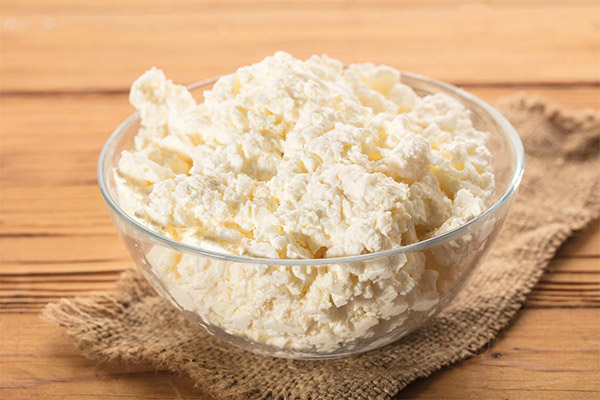
GOST or TU
Today in Russia there are two types of standards for the production of food products - GOST and TU. It is these indicators that help the consumer to verify the quality of the goods. Basically, all brands undergo research to confirm compliance or deviation from normative documents.
GOST stands for State Quality Standard, defined by the requirements of the state to the quality of products. This system was launched back in the USSR, its main purpose was to regulate the production of goods.
The main emphasis is placed on the quality and types of raw materials, their origin, production process, storage conditions, labeling. This is the complex path that the product passes, turning from raw materials into a finished product. GOST always has a number that indicates the authenticity of the product document and guarantees the technology of its preparation in accordance with state standard. In this case, cottage cheese has a number GOST 31453 2013.
TU - these are the specifications that the manufacturer has drawn up for his product, according to GOST. Considering all the rules and standards, the requirements concerning the packaging and storage of cottage cheese in a certain container for consumers must be complied with. The package must indicate that the product is made from cow's milk or other dairy products intended for consumption.
The TU must include certain ranges of chemical composition in percentages. For example, the mass of protein - 14-16%, the moisture component - 60-76%, acidity - 200-230 degrees Turner. When choosing, it is worth paying attention to the composition. According to the TU, cottage cheese should not contain phosphatase or peroxide. These components have the ability to increase the shelf life, while violating the necessary physical and chemical indicators. The consumer should remember that when buying, he has the right to ask the seller for a document confirming the quality of the product, which must specify the date of production. Also on the wholesale container is always a marking, which the buyer can ask to read.
Fat content
It is known that cottage cheese can be store and homemade. The latter is usually sold at farm stands or from grannies on the street. Everyone has the right to trust anyone, including the producer. But it is better to check, and for this you just need to have the knowledge to determine the naturalness of the product by its fat content.
On the shelves of the store you can find three types of cottage cheese - skim, classic and fat. All of them may well be both natural and with additives. This can be determined not only by State Standard, because a huge role is played by the percentage of fat content.
For example, fat-free natural cottage cheese should not have 0% fat content, as its main indicator is 1.8%. In this case, it retains all the useful qualities in full. It is distinguished only by its low caloric content, easy digestion and ability to be an excellent dietary product.
In the classic natural curd fat content should not go beyond the 5-15% range. Fatty cottage cheese has a value of up to 23%. This is the maximum fat content that this product can have.
The most popular is cottage cheese 18%, as it is used in children's nutrition. Otherwise, such a product is called semi-fat. But it should be understood that the information on the packaging does not always correspond to reality, so in this case it should be compared with the presence of GOST and TU.
But experienced buyers in the market claim that the whiter the cottage cheese, the less fat content it has. A product with a high percentage of fat will have a creamy or light yellow color. In theory this is correct, but the most reliable information can only be given by an analysis made in a laboratory.
Color
In order not to mislead yourself by studying the proposed gastronomic product, you can determine the degree of its naturalness visually, because the appearance of cottage cheese can tell a lot. To begin with, you should pay attention to its consistency. Quality natural cottage cheese should have grainy grains of different sizes. When mixed, it should be crumbly and not sticky. If the granules are equal in size and smooth, then this fact is considered unnatural for a proper fermented dairy product. It clearly has impurities, and the object of gastronomy can safely be called a fake.
After checking the consistency, you need to pay attention to the color of cottage cheese itself, which plays an essential role. The natural product can be pure white or with a creamy hue. It was said above that this coloring indicates the degree of fat content. Speaking about the naturalness of cottage cheese, you need to be especially careful. The fact is that yellow, not very natural color can indicate a low-quality product, which many buyers take for a high degree of fatness, and sellers are happy to agree with this hypothesis. In fact, the yellow color can be dangerous to health, because such a result can give unacceptable additives.
If the product has a slightly pinkish hue, it is better to refrain from buying at all, as even heat treatment will not help. The pink color indicates spoilage. But it was put on the counter thanks to special treatments that kill staphylococcus bacilli. This product can't be poisoned, but it can't be good for you, either. In addition, a fantastic amount of chemicals will enter the body when using this cottage cheese. And in this case, there should not be any labels with the seller. A quality product should not have unnatural suspicious colors.
The composition of .
One important sign that cottage cheese is natural is its composition. When studying the information on the product packaging, the first thing you should pay attention to is the expiration date. It is important not only how fresh the cottage cheese is, but also the total time allotted for the relevance of its consumption. If the shelf life is more than 7 days, then this product is not natural. It originally has added preservatives and other chemical impurities that artificially extend the shelf life.
Excessive dryness or unnatural liquid-like consistency indicates irregularities during production. Thus, some manufacturers, counting on the incompetence of buyers, pass off curd product or curd mass as natural curd.
The right curd should not contain any vegetable fats. If the composition on the label indicates the presence of palm or coconut fat, then the production was simply economized, and in this case it does not have the useful properties and any micronutrients characteristic of fermented dairy products.
Real cottage cheese should not contain starch. Some producers add it to increase the weight. Therefore, after buying one kilogram of natural cottage cheese, many people do not realize that it is only half-natural.
Be sure when reading the information about the product to remember that brands that have received a quality label, can not have antibiotics, food additives and acidity regulators in the composition of cottage cheese. The presence of such ingredients indicates poor quality. In addition to proteins, fats and carbohydrates, proper curd has vitamins A, B1, B2, C, PP, iron, potassium, calcium, magnesium, sodium, phosphorus and many beneficial bacteria for the intestines. Its main components should be quality milk, sourdough, butter and cream. And most importantly, the fewer ingredients in the composition, the better.
The dangers of eating a low-quality product
Cottage cheese is a product of animal origin. Everyone knows that it is originally derived from milk, which, in turn, is produced by an animal. And like any food rich in animal protein, tainted cottage cheese can be extremely dangerous. It can be bad not only because of expiration dates, but also because of improper manufacturing techniques, as well as low-quality composition. How can eating low-quality cottage cheese be dangerous?
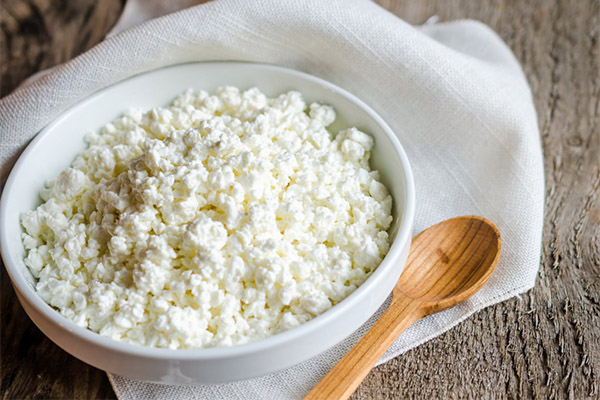
Infectious diseases
If the content of yeast was exceeded during the production of cottage cheese, as well as it has a shelf life of 10 days or more, then the consumption of such a product can provoke serious poisoning, and will have to spend a couple of weeks in an infectious disease ward. As a rule, this technology leads to the appearance of invisible mold and E. coli.
Weight gain.
Colorful labels, worthy of advertising their manufacturer, attract the attention of the buyer. Taking such a package of cottage cheese in the hand, you can, in addition to the pleasant appearance, appreciate the decent weight of the product. The starch that gives this effect has nothing to do with usefulness. This is nothing more than an empty floury product that makes the taste of cottage cheese neutral, and the presence of useful substances reduces to zero. Therefore, the use of such low-quality cottage cheese can only promise a set of extra pounds.
Oncological diseases
The high content of phosphates, which was detected in some brands, does not bode well for human health. Such chemical elements are able to accumulate in the body, and with unfavorable external factors, such as bad ecology, improper diet, can provoke the development of tumors. And here it is wrong to say that the more expensive the product, the better quality it is. After all, many unscrupulous manufacturers set quite a high price tag for their goods.
Cardiovascular diseases
Cottage cheese, which has an unnatural yellowish hue and a lot of starch in its composition, can have a very negative effect on the walls of blood vessels, clogging them with bad cholesterol. Such products literally spoil the blood. In the future, this can end up in thrombophlebitis, stroke, or for starters, just hypertension.
As it turns out, the consequences of consuming low-quality cottage cheese are quite serious. Therefore, before you save money or take the first packet off the counter, taking the word of the manufacturer, it is worth applying all the knowledge about checking the quality of the product.
How to check the quality of cottage cheese at home
Not always when buying cottage cheese in a store or at the market it is possible to fully test the product for quality and degree of naturalness. As a rule, doubts remain and pursue then to the moment of consumption. But even in this case, not everyone is able to understand whether it was the right product. There are many methods you can use to check curd for naturalness at home, without special tests.
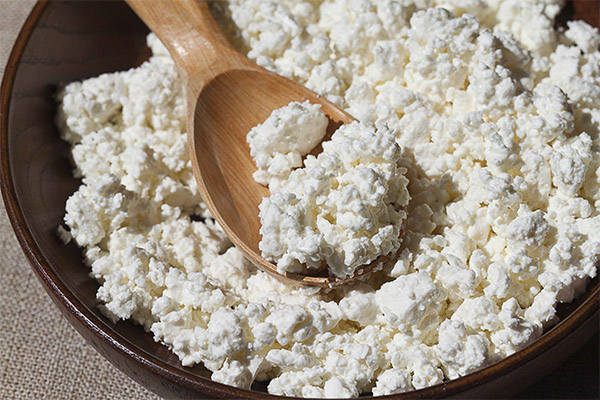
Checking cottage cheese for the presence of vegetable fats
The presence of vegetable fats in a product can be checked by tasting it. After eating a little bit of cottage cheese, you may get a feeling of an oily film in your mouth. Such a result will undoubtedly indicate a low quality product. But there is another way, which will verify the result visually. To do this, take a glass, pour warm water into it and add a small pinch of purchased cottage cheese, stir and set aside for a while. The presence of vegetable fats will be indicated by a characteristic yellow film on top of the water and the cottage cheese settled to the bottom of the glass.
If there is still no film on the surface of the water, you can check the quality in another way. To do this, you need to put some cottage cheese in a plate without putting it in the refrigerator for a long time. If there is still fat in the product, it should change color in a short period of time to yellow, without changing the taste. The natural product will behave differently in this test - it will not change color, but it will taste slightly sour.
Another way to check the cottage cheese for fats is to put a small piece of it in a heated dish without oil. If it melts, you can be sure that it contains vegetable fats. If the curd curdles and whey comes out of it, this will indicate the naturalness of the product.
Checking your cottage cheese for starch
As it turns out, adding starch to cottage cheese is financially profitable for an unscrupulous manufacturer. But this is far from a pleasant fact for the consumer. But it is very easy to check the product for the presence of starch in it with iodine. It is enough to take some cottage cheese and drip a couple of drops of the drug on top of it. If the product has turned blue, this can only indicate the presence of starch in it. And if the cottage cheese left its previous color in the place where iodine was added, you can be sure of the quality of the product.
Checking cottage cheese for the presence of chalk and soda
Sometimes unscrupulous manufacturers add chalk to cottage cheese. The reason for this is that it is rich in calcium and also has a white color. Some laboratory tests may indeed show a large amount of calcium in the curd. But if you dig a little deeper, you can find out that it's just a clever trick. Soda is added for the puffiness of the product. To determine the presence of chalk and baking soda in cottage cheese, it is enough to conduct an experiment at home. It is necessary to take some cottage cheese and pour vinegar or lemon juice on it. If there is chalk and baking soda, a chemical reaction should occur and a hissing will occur. If the reaction did not occur, then such components are absent from the curd or their presence in it is minimal.
How is cottage cheese useful?
The fact that cottage cheese is good for the human body has been known since ancient times. Not for nothing it is shown when building a proper diet and is included in almost all medical diets. Those who care about themselves and their loved ones' health should learn about the useful properties of cottage cheese.
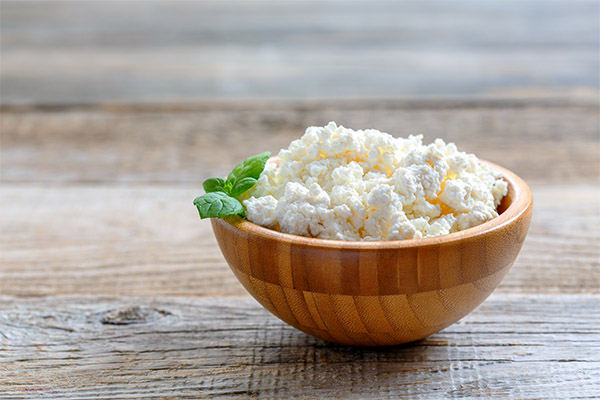
It is rich in protein.
Cottage cheese is an excellent source of protein, which is essential in the formation of muscle mass, the elimination of signs of aging and the successful development of tissues in the body. That is why it is often consumed by athletes, owners of beautiful skin and people who simply want to replenish protein levels.
Strengthens bone tissue
It is not for nothing that mothers try to give more cottage cheese to their children from the earliest years. It affects the formation of bone tissue at the very first stages of its formation. Calcium is also necessary for the elderly, who are prone to its deficiency in the body. Therefore, the use of cottage cheese is advisable at any age.
Cleanses the liver
This organ takes the most important blow, which our body is subjected to by various factors. Alcohol consumption, poor diet, bad ecology, sedentary lifestyle - all this aggravates the liver. And it is cottage cheese can gradually restore it, saturating it with all the necessary microelements, thus affecting our general well-being.
Improves digestion
There are many people in the world with diseases of the gastrointestinal tract. With such ailments as ulcers, gastritis, pancreatitis and dysbacteriosis, cottage cheese is an integral part of the therapeutic diet. It helps the organs function better, speeding up the full recovery of intestinal microflora.
It relieves swelling
Calcium salts, which are abundant in cottage cheese, create a diuretic effect, just like any dairy product. People prone to edema, consuming cottage cheese regularly, can get rid of a puffy face, resuming normal operation of the lymphatic system.
Gives beauty
The healing properties possessed by the product give a person beautiful hair, skin and nails. And if you use it not only in the form of food, but also as masks, the effect will be much faster.
Prevention of cancer
Thanks to scientific studies, it is proved that regular consumption of cottage cheese can prevent the formation of malignant tumors. Thanks to the fact that the body is quickly and fully saturated with calcium, the product actively destroys free radicals, which are dangerous for humans. It is they cause the development of cancer.
Protects the cardiovascular system
Regular consumption of cottage cheese prevents the formation of cholesterol plaques. At an older age, it is especially important to include the product in your diet. It will reduce the risk of strokes, heart attacks and blood clots.
The properties that cottage cheese has can not only saturate the body with missing micronutrients, but also protect it from dangerous diseases. Such a virtue is worth considering every person who is not indifferent to his health and deservedly introduce the product in his diet.
What are the benefits of fat-free cottage cheese
There is a perception that the less fat content in cottage cheese, the less useful it is. And, accordingly, many people believe that fat-free product is extremely useless for the body. Is this true?

Thanks to repeated studies, it has been proven that low-fat cottage cheese has the same beneficial properties as some kinds of cheese (such as brynza or Greek cheese). This product is actively prescribed by nutritionists, as it is easily digested. Also for hypertension, potassium, which is contained in cottage cheese, improves the cardiovascular system, and B vitamins strengthen the nerves. The minus of this product is only in the minimum content of calcium, which does not affect the quality in any way. Sitting on a strict grueling diet, it is not recommended to eat cottage cheese with a fat content below 5%.
When looking for natural cottage cheese you should remember not only about the rules of checking the quality of the product, but also about the price. Despite the fact that some producers and sellers unreasonably inflate the cost, still the real product can not cost cheap. On the shelves of stores every year there are fewer and fewer natural products, and more and more substitutes and junk food. So, taking care of your health, you should strive to consume what nature unselfishly gives to man.
«Important: All information on this site is provided for informational purposes only. for informational purposes only. Please consult with your health care professional before using any of the recommendations. specialist before using any of the recommendations. Neither the editors nor the authors shall be liable for any possible harm caused by materials."

